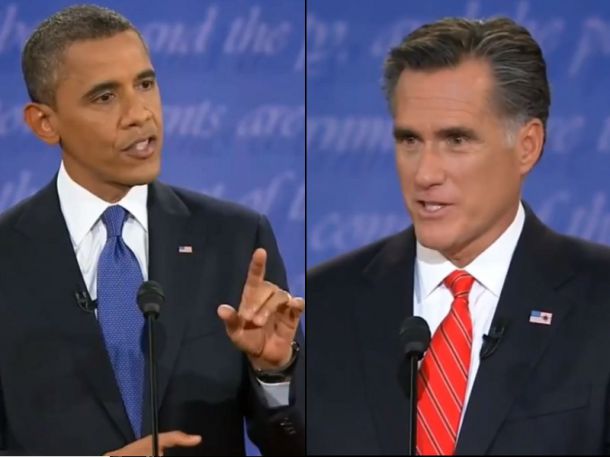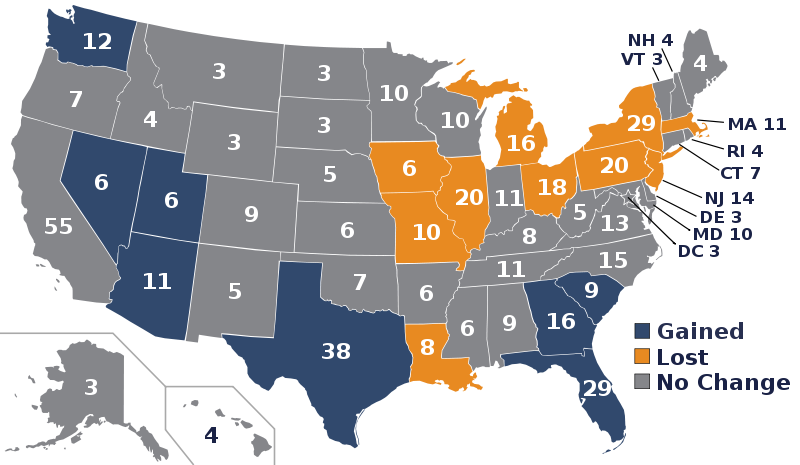
While political drama and comedy shows like The West Wing and HBO’s Veep can give internationals an informal introduction to the political system of the United States, many are still confused by the campaigns and complex election system of the country.With the 2012 elections just around the corner, political conversation is sure to increase amongst New Yorkers as Mitt Romney challenges President Obama for the highest seat in office. As internationals, understanding the US political system can be challenging. The complex voting system and the separate structure of country and state governments is often confusing. To be sure that you can follow and participate in political conversations, New York International has put together a guide to US election basics which highlights things you won’t pick up from watching The West Wing.THE START OF THE PRESIDENTIAL PROCESSThe process of running for office starts with campaigning. While there are officially more than two parties in the United States, most politicians run under the Democratic or Republican ticket. Individuals who want to run for office submit an application to the Federal Election Commission and submit a bid with their chosen party.The candidate will then start campaigning across the areas that will most affect their vote. For Mitt Romney, this meant traveling all over the country to spread the word of his policies and his vision for the country should he be elected the President of the United States. During this time, candidates also raise funds to support their campaign.The first big vote for the presidential ticket is the primary election, in which each political party elects the candidate they would like to run for president. The primaries take place in the spring prior to the November elections, providing the chosen candidate ample time to campaign against the other party’s candidate.The chosen candidate in each party must then announce who his or her running mate will be. This is the individual who will be the Vice-President of the United States should the candidate win the election. The vice-president is the first person in succession to the president in the event of death, removal, or resignation. The vice-president also acts as the president of the US Senate and is able to vote on items that require the break of a tie.US ELECTIONS – THE MONEY – THE INDUSTRYOne aspect of US elections that is drastically different from many other political races worldwide is the cost of campaigning for government offices and the need for candidates to raise their own funds. Many candidates are quite successful at this. For example, Reuter’s reports that President Obama’s re-election campaign in 2012 is expected to break records with a staggering $1 billion raised from private donations alone.The money raised while campaigning is spent on cross-country campaign trips, advertisements to promote the candidate or diminish the reputation of their opponent, and paying the campaign personnel who make the extravagant trips and advertisements possible.These expenses – added to the fact that a US presidential election campaign lasts more than a year – easily become a substantial amount over the period of the campaign. It is estimated that the 2008 elections – ranging from state level elections to the race for the seat in the White House – cost nearly $5 billion. According to Reuters, the 2012 elections are projected to cost nearly $6 billion – a 20% growth rate in a shrinking economy.CONVENTIONS AND DEBATESBeyond nationwide campaigning, there are a number of events that the candidates must attend as their party’s nominee. The first significant events are the conventions that take place towards the end of summer. At the Democratic National Convention (DNC) and the Republican National Convention (RNC), key speakers will endorse their party’s selected candidate. Examples of these speakers might be well-received politicians, other government officials, or prior presidents. For example, at this year’s Democratic National Convention, Bill Clinton spoke endorsing Barack Obama as the best candidate for the 2012 election.These conventions also give the candidates a chance to address their party and highlight their fundamental policies. The vice presidential candidate also addresses the convention. He or she speaks of the downfalls of their opponents and how their team’s policies would improve the country. At the conclusion of the convention, each candidate accepts the party’s nomination for president or vice-president and begins preparing for the presidential and vice-presidential debates.Before the November election, both candidates and their respective running mate must attend several nationally televised debates. These debates are hosted by non-biased hosts at universities across the nation. The debates will cover both domestic and foreign policies. Questions will be posed to each candidate chosen by either the debate moderator or asked on the spot by undecided voters in a “town hall” format. The moderator is responsible for promoting a discussion between the candidates.VOTING PROCESSOnly American citizens may vote in presidential elections. In order to vote, a citizen must register to vote in his or her district. Each person must vote at a specifically assigned polling station in their district. Employers are required to give their employees time to vote on election day as many polls close before work ends.Once in the voting booth, it is not as simple as a “check here for Romney, check here for Obama,” as other elections are also taking place. You may be looking at elections for senators, representatives of the house, or other state and municipality offices.Depending on the district and state, the voter may also have referendums and local laws that must be voted on. Something which may be confusing to internationals is that in the US each state has its own individual laws on a variety of subjects. For example, alcoholic consumption laws, speed limits and driving laws, education laws, definition of marriage laws, gun control laws, and medical marijuana laws among others vary widely from state to state.WINNING THE ELECTIONAlthough the idea of a democracy is that whoever has the most votes wins, this is not exactly the case in the United States. In the 2000 election, for example, Al Gore had 500,000 more popular votes than George Bush nationwide, but Bush took the election due to the structure of the Electoral College.The Electoral College is a system that was put in place by the founders of the US as a compromise between election of the president by senate and election of the president by popular vote.In the United States, there is a total of 538 “electors” in the Electoral College. Each state is allotted a number of electoral votes based on the number of senators and the number of representatives in the House of Representatives, both of which are based on a state’s population. More populous states hold more weight than smaller states. For example, California has 55 electoral votes while Rhode Island has only 4. See the diagram below for how many electoral votes each state has in 2012. When an American votes for their presidential candidate, they are actually voting for a member of the Electoral College who will vote for their presidential candidate. Most states have statutes in place stating that majority wins the entire state’s electoral votes.In order to win the election, a candidate must secure at least 270 of the 538 electoral votes from the Electoral College. The key to winning the 270 votes is winning the “swing states”. There are some states that historically always vote for the same party. California and New York always vote Democratic, Texas and Alabama always vote Republican. “Swing states” are states that are politically “moderate” and have voted in either direction in previous presidential races. Many times if a candidate can win the votes from these states, it will determine if he or she will win the election.The election takes place on the Tuesday following the first Monday of November. In the 2012 election, Election Day is November 6th.TALKING POLITICSWhile this guide may have given you a bit more of a background on the basics of the US political system, do bear in mind that politics are a very sensitive subject that you should not bring up with anyone unless you know them very well or you are in an environment that encourages political debate.MORE RESOURCESThe US Government supplies basic information on more specific topics at http://www.whitehouse.gov/our-government. This is a great resource to better understand the specific branches of the US Government, state and local governments and the different federal agencies and commissions that all work together to keep the US Government running.
When an American votes for their presidential candidate, they are actually voting for a member of the Electoral College who will vote for their presidential candidate. Most states have statutes in place stating that majority wins the entire state’s electoral votes.In order to win the election, a candidate must secure at least 270 of the 538 electoral votes from the Electoral College. The key to winning the 270 votes is winning the “swing states”. There are some states that historically always vote for the same party. California and New York always vote Democratic, Texas and Alabama always vote Republican. “Swing states” are states that are politically “moderate” and have voted in either direction in previous presidential races. Many times if a candidate can win the votes from these states, it will determine if he or she will win the election.The election takes place on the Tuesday following the first Monday of November. In the 2012 election, Election Day is November 6th.TALKING POLITICSWhile this guide may have given you a bit more of a background on the basics of the US political system, do bear in mind that politics are a very sensitive subject that you should not bring up with anyone unless you know them very well or you are in an environment that encourages political debate.MORE RESOURCESThe US Government supplies basic information on more specific topics at http://www.whitehouse.gov/our-government. This is a great resource to better understand the specific branches of the US Government, state and local governments and the different federal agencies and commissions that all work together to keep the US Government running.

